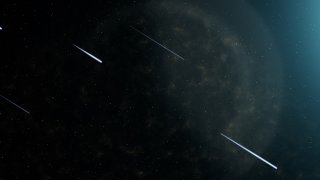
What's happening in the skies over North Texas this month? May holds some spectacular sights in the night and morning sky. Check out the list below.
FULL FLOWER MOON
The May full moon, known as the Flower Moon, will make for a delight on May 5th.
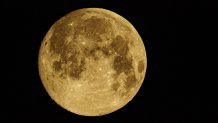
Get DFW local news, weather forecasts and entertainment stories to your inbox. Sign up for NBC DFW newsletters.
The name, Flower Moon, signifies the flowers that bloom during this month. Native Americans called it Budding Moon, Egg Laying Moon, and Planting Moon.
Also, catch out other phases of the moon this month. By the way, on May 11th at 12:05 a.m. CDT, the Moon will be at perigee, its closest to the Earth for this orbit at 225,623 miles. On May 25th at 8:39 p.m. CDT, the Moon will be at apogee, its farthest from the Earth for this orbit at 252,088 miles.
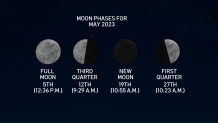
WHEN DOES THE INTERNATIONAL SPACE STATION FLY OVER NORTH TEXAS?

The International Space Station will make flybys across the North Texas sky this month. The ISS appears as a fast-moving star across the night sky.
Local
The latest news from around North Texas.
The International Space Station rotates around the Earth at a speed of 17,500 mph. The ISS rotates about its center of mass at a rate of about 4 degrees per minute so that it will complete a full rotation once per orbit. This allows it to keep its belly towards the Earth. One revolution around the planet takes about 90 minutes (16 per day).
Also, the International Space Station lies at an altitude of 250 miles above the Earth. By the way, that is 1.32 million feet. Most commercial airplanes fly between 33,000 to 42,000 feet.

MONTHLY METEOR SHOW: THE ETA AQUARIIDS

The Eta Aquariids will be active until May 28th, but they will peak on the night of May 4th and into the early morning hours of May 5th. The meteors will be best viewed during the pre-dawn hours, specifically.
The meteor shower occurs when the Earth passes through a dusty trail of space debris left behind by Halley's Comet. The Earth passes through dust grains from Halley’s path twice a year to create two meteor shower events – the Orionids in October and the Eta Aquariids in May.
You are more likely to see them if you have an unobstructed view with clear skies in a very dark place far from any urban light sources.
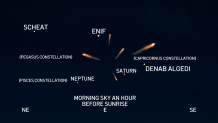
AN EVENING SHOW: VENUS, THE MOON AND MARS
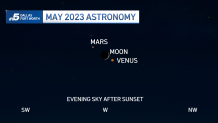
Right after sunset, look in the western sky to see two planets and the Moon. Venus (the brightest - Evening Star) will be above the western horizon next to the Moon. Venus will disappear from the evening sky by late July, reappearing in the eastern sky about a month later as a morning planet. Meanwhile, Mars (the next brightest) will appear above the west-southwestern horizon.
Venus's distance from the Earth varies from 24 million miles to 162 million miles. Mars averages a distance from the Earth of 140 million miles. The closest recorded distance to Mars from Earth was recorded in August 2003 when the two were 34.8 million miles apart. According to NASA, the two will not be that close again until the year 2237.
A MORNING SHOW: JUPITER AND THE MOON
Jupiter will be visible above the eastern horizon one hour before sunrise at the end of May. A special delight will come with the gas giant as the Moon will be nearby.
Jupiter's distance from the Earth varies from 336 million miles to 600 million miles.
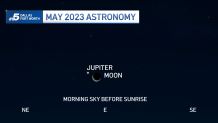
Please enjoy these events happening in the night sky this month. Until then...Texans, keep looking up!



